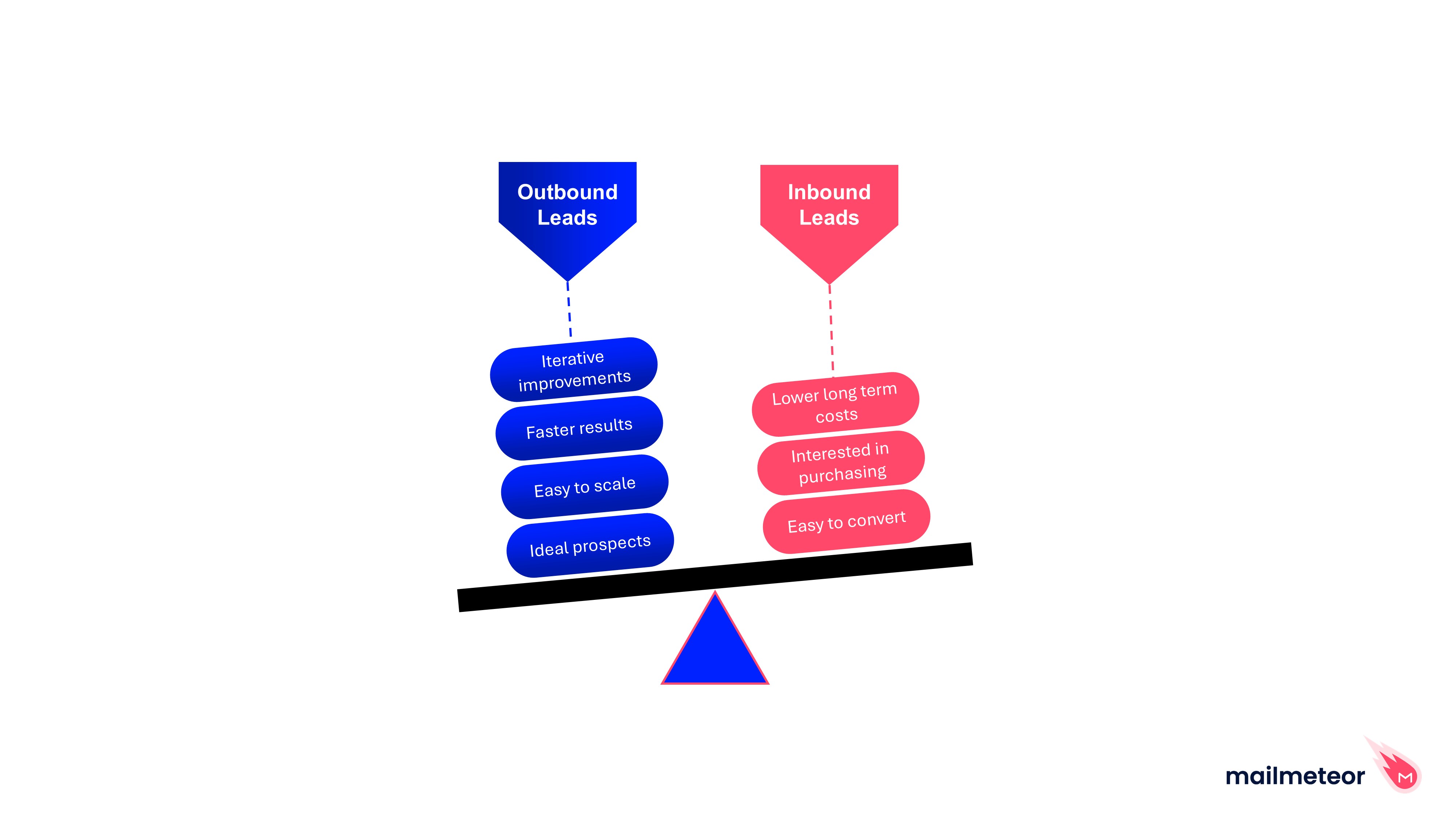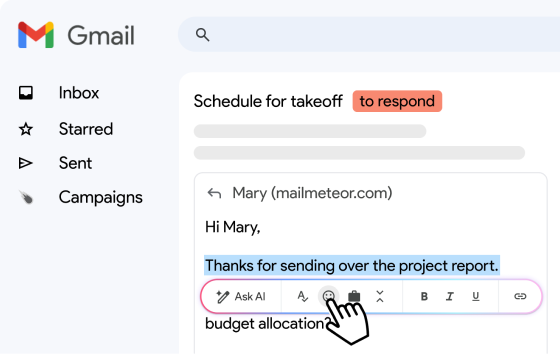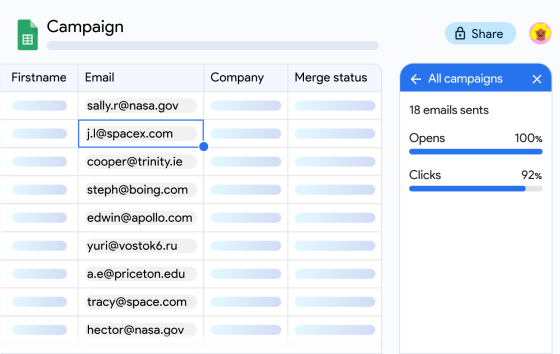Generating a consistent stream of leads is crucial for companies of all sizes to thrive, grow, and exist. Without lead generation, converting these prospects into paying clients, and ultimately sustaining revenue, the day-to-day operations of any business can quickly shut down.
While there are countless terms and definitions about the various strategies used to engage potential customers, two dominate: inbound & outbound lead generation.
Inbound lead generation focuses on nurturing leads who come to you on their own. This can be through your own efforts such as content marketing, SEO, or a referral. Since these prospects are already interested in your service, we categorize and deal with them in a manner that is limited to them.
On the other hand, outbound lead generation is about approaching potential clients directly.
In this article, we will discuss how outbound lead generation is different from its inbound counterpart, and how you can best take advantage of it for your business’s growth.
Here’s what we’re getting into:
- Outbound vs Inbound Lead Generation
- Outbound Lead Generation Methods
- The Right Method for Your Business
Let’s get started!
Outbound vs Inbound Lead Generation
Inbound lead generation methods can take a while to build up momentum. They often rely on leads approaching you directly. On the other hand, outbound strategies let you directly target and reach out to prospects, keeping you in control of your sales pipeline.

While we could go into the nitty-gritty of both methods, let us stick to the avenues where outbound lead generation has a significant advantage:
- Faster Results: Outbound efforts often yield quicker results compared to inbound strategies. Since you would be actively reaching out to a specific target audience, you can start conversations and generate interest almost immediately, speeding up the sales cycle.
- Ideal Prospects: With outbound, you have the ability to handpick your prospects. We recommend developing an ideal customer profile (ICP) if you do not have one already, then focus your efforts on prospects that match it.
- Scalability: You can easily scale outbound campaigns based on performance. If something clicks with a certain type of customer, quadruple your outreach, and results will follow. Inbound lead generation efforts depend on factors that are out of your control, making scalability a difficult topic.
- More Control: Did you just send out an outreach campaign? Did you not get any results worth your while? It is time to try a new approach and adjust your efforts based on what works. Outbound campaigns let you improve your efforts in an iterative manner. No one is born with all the answers; we learn by failing.
To put it simply, outbound lead generation provides a proactive, scalable, and calculated method of engaging with potential customers. These methods let you drive growth and create more opportunities for your business. When executed well, an outbound lead generation campaign quickly becomes the largest growth driver of any business.
Outbound Lead Generation Methods
As discussed, outbound lead generation is about actively reaching out to potential clients, rather than waiting for them to come to you. But how? We do so by targeting the right audience, starting the right conversations, and nurturing long-term relationships with our prospects.
Let us now explore some of the outbound lead generation methods you can use to build yourself a steady flow of prospects that are easier to close. Keep in mind that each method has its own unique strengths, so understanding how they work will help you determine which ones are the best fit for your business.
Email Outreach
Email outreach is one of the most common and cost-effective outbound lead generation strategies.
The goal is simple: you send personalized emails to a targeted list of prospects with the aim of initiating a conversation or setting up a meeting.
You can automate email outreach with almost every modern marketing tool. The initial personalized message, your follow-ups, and even the closing can be automated. But the key to success is to ensure that the emails remain highly relevant, well-written, and tailored to the recipient’s needs or pain points. Modern email outreach is about balancing your use of automation and the authentic personalization of your emails.
Email outreach is ideal for businesses who need to engage with a large number of prospects with the ability to scale it up even further. It works especially well for SaaS providers, marketing agencies, recruiters, and businesses who can easily define their target audience.
If you sell a product or offer a service to a specific niche, email outreach is for you.
Cold Calling
Cold calling involves reaching out directly to potential prospects via a phone call. You introduce your company, services, and attempt to initiate a conversation that could lead to a sale.
However, it is important to note that cold calls are seen as nothing more than a nuisance by certain audiences and demographics.
Properly pulling off a cold call requires preparation, a convincing pitch, and the ability to handle objections in real-time. The key to success? Persistence and personalization. Ask about and try to understand the prospect’s pain points and tailor your message accordingly.
Cold calling is effective for businesses that sell high-ticket or complex products and services. Direct conversations help build trust and clarify value, while prospects are also more receptive about these services as they often stand to profit from the results.
Industries such as B2B SaaS, consulting, financial services, and enterprise solutions often benefit from cold calling, as these sales processes typically involve more decision-makers and longer sales cycles that can be addressed through direct engagement.
Social Media Outreach
Social outreach uses platforms like LinkedIn, Twitter, and Facebook to build and nurture long-term relationships with potential leads. It is not about sending a cold pitch immediately but about developing trust by sharing valuable content, engaging in relevant discussions, and positioning yourself as a trusted authority in your field.
Social selling lets you build rapport before directly reaching out to prospects, creating a warm introduction that can increase your chances of conversion.
This strategy is especially effective for B2B companies, particularly those in tech and professional services. Why? Because these decision-makers are active on social media and open to networking.
Paid Advertisements (PPC)
Paid advertisements, such as Google Ads or Facebook Ads, let you target a specific audience based on demographics, interests, and behaviors. If done right, PPC ads can generate leads with the scalability of outbound marketing but the quality of inbound marketing.
Unfortunately, you will also end up reaching out to a ton of people who are straight up irrelevant to your business.
PPC ads are best suited for businesses looking to scale quickly and reach wide audiences with a clear targeting criterion. E-commerce businesses and B2C SaaS companies often use PPC and social ads to drive traffic and build their lead databases quickly.
These ads are also a great method for businesses that have the budget to test and optimize their campaigns because your first ad campaign will almost definitely be a complete failure.
Networking and Referrals
Did you know that you can leverage your existing relationships and customers to find new leads? Leads that you find through this method are also far easier to convert since you can simply start off your pitch by mentioning the person who referred you to them.
Such a mention is worth far more than a traditional endorsement from a third party. Participating in business events and gatherings is how you earn these, and from our experience, simply asking your closest clients for a referral can often do the trick.
If your business is in the service industry then you absolutely understand the value of referrals since trust and reputation are key to success when providing services. Small and medium-sized businesses that operate in tight-knit communities or niche markets can also benefit greatly from referrals.
The Right Method for Your Business
Outbound lead generation is all about actively reaching out to potential customers rather than waiting for them to find you. You get faster results, but at higher financial and labor costs.
In a world where inbound strategies take a while to gain traction, outbound is a decent starting point while you work on your inbound strategies.
Let us make the decision a bit easier for you by summing up the scenarios where each of the above methods may be fruitful:
- Email Outreach: The most cost-effective strategy where personalized emails target specific prospects. Your aim is to start a conversation. It is scalable, ideal for SaaS, marketing agencies, and businesses with a defined niche, but it can work for pretty much everyone if you put your heart to it.
- Cold Calling: Direct phone calls to prospects, suitable for selling high-ticket or complex services which require trust-building. Remarkably effective in B2B industries where both parties stand to gain from an arrangement.
- Social Media Outreach: Leverage platforms like LinkedIn and Twitter to build trust and nurture leads over time before pitching. This approach is especially effective in B2B industries. Plenty of businesses and individuals run a YouTube channel for building an audience, then offer their services on the side.
- Paid Advertisements (PPC): Ideal for B2C but plenty of B2B businesses also use this. You use platforms like Google Ads to reach a broad audience quickly. Best for businesses with the budget to test and optimize campaigns, often used by e-commerce businesses as well.
- Networking and Referrals: Tap into existing relationships and client networks to gain new leads. Particularly useful for service-based businesses and those operating in niche markets. Incredibly effective for filling open client slots for your business, especially if your current clients are happy with you.
There are plenty of strategies to consider when it comes to lead generation, each with its own unique advantages and suitability depending on your business objectives, target audience, and the resources available to you. We hope this article has provided you with the knowledge necessary to choose the right method for you.


